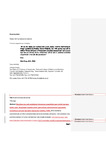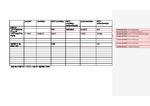Novel Etomidate Derivatives
| dc.contributor.author | Robert Sneyd, J | |
| dc.date.accessioned | 2012-11-09T22:11:25Z | |
| dc.date.accessioned | 2013-06-19T12:02:53Z | |
| dc.date.accessioned | 2013-06-19T12:04:11Z | |
| dc.date.available | 2012-11-09T22:11:25Z | |
| dc.date.available | 2013-06-19T12:02:53Z | |
| dc.date.available | 2013-06-19T12:04:11Z | |
| dc.date.issued | 2012-10-29 | |
| dc.identifier.issn | 1381-6128 | |
| dc.identifier.issn | 1873-4286 | |
| dc.identifier.uri | http://hdl.handle.net/10026.1/1541 | |
| dc.description | Files replaced (incorrect versions) on 28/7/2022 by KT (LDS). | |
| dc.description.abstract |
Etomidate is a well established intravenous anaesthetic agent which has been widely used. Recognised limitations of the agent include adrenocortical suppression, myoclonus and post-operative nausea and vomiting, PONV. MOC-etomidate, carboetomidate and MOC-carboetomidate are novel etomidate derivatives. Their preclinical data and their potential for human administration are critically reviewed. 'Soft' pharmacology (rapid ester hydrolysis) limits the duration of action of MOC-etomidate and MOC-carboetomidate giving them rapid offset after administration is discontinued. Adrenocortical depression is minimised either by ester hydrolysis or by structural change to the etomidate molecule. Potential limitations include the yet to be determined incidence of myoclonus and PONV if these new agents are administered to humans. | |
| dc.format.extent | 6253-6256 | |
| dc.format.medium | ||
| dc.language | en | |
| dc.language.iso | eng | |
| dc.publisher | Bentham Science Publishers Ltd. | |
| dc.relation.replaces | http://hdl.handle.net/10026.1/1225 | |
| dc.relation.replaces | 10026.1/1225 | |
| dc.relation.replaces | http://hdl.handle.net/10026.1/1540 | |
| dc.relation.replaces | 10026.1/1540 | |
| dc.subject | Etomidate | |
| dc.subject | MOC-etomidate | |
| dc.subject | carboetomidate | |
| dc.subject | MOC-carboetomidate | |
| dc.subject | propofol | |
| dc.subject | midazolam | |
| dc.title | Novel Etomidate Derivatives | |
| dc.type | journal-article | |
| dc.type | Journal Article | |
| dc.type | Review | |
| plymouth.author-url | https://www.webofscience.com/api/gateway?GWVersion=2&SrcApp=PARTNER_APP&SrcAuth=LinksAMR&KeyUT=WOS:000310579800009&DestLinkType=FullRecord&DestApp=ALL_WOS&UsrCustomerID=11bb513d99f797142bcfeffcc58ea008 | |
| plymouth.issue | 38 | |
| plymouth.volume | 18 | |
| plymouth.publication-status | Published | |
| plymouth.journal | Current Pharmaceutical Design | |
| dc.identifier.doi | 10.2174/138161212803832362 | |
| plymouth.organisational-group | /Plymouth | |
| plymouth.organisational-group | /Plymouth/Faculty of Health | |
| plymouth.organisational-group | /Plymouth/Users by role | |
| dc.publisher.place | United Arab Emirates | |
| dcterms.dateAccepted | 2012-06-28 | |
| dc.identifier.eissn | 1873-4286 | |
| dc.rights.embargoperiod | Not known | |
| rioxxterms.versionofrecord | 10.2174/138161212803832362 | |
| rioxxterms.licenseref.uri | http://www.rioxx.net/licenses/all-rights-reserved | |
| rioxxterms.licenseref.startdate | 2012 | |
| rioxxterms.type | Journal Article/Review |



